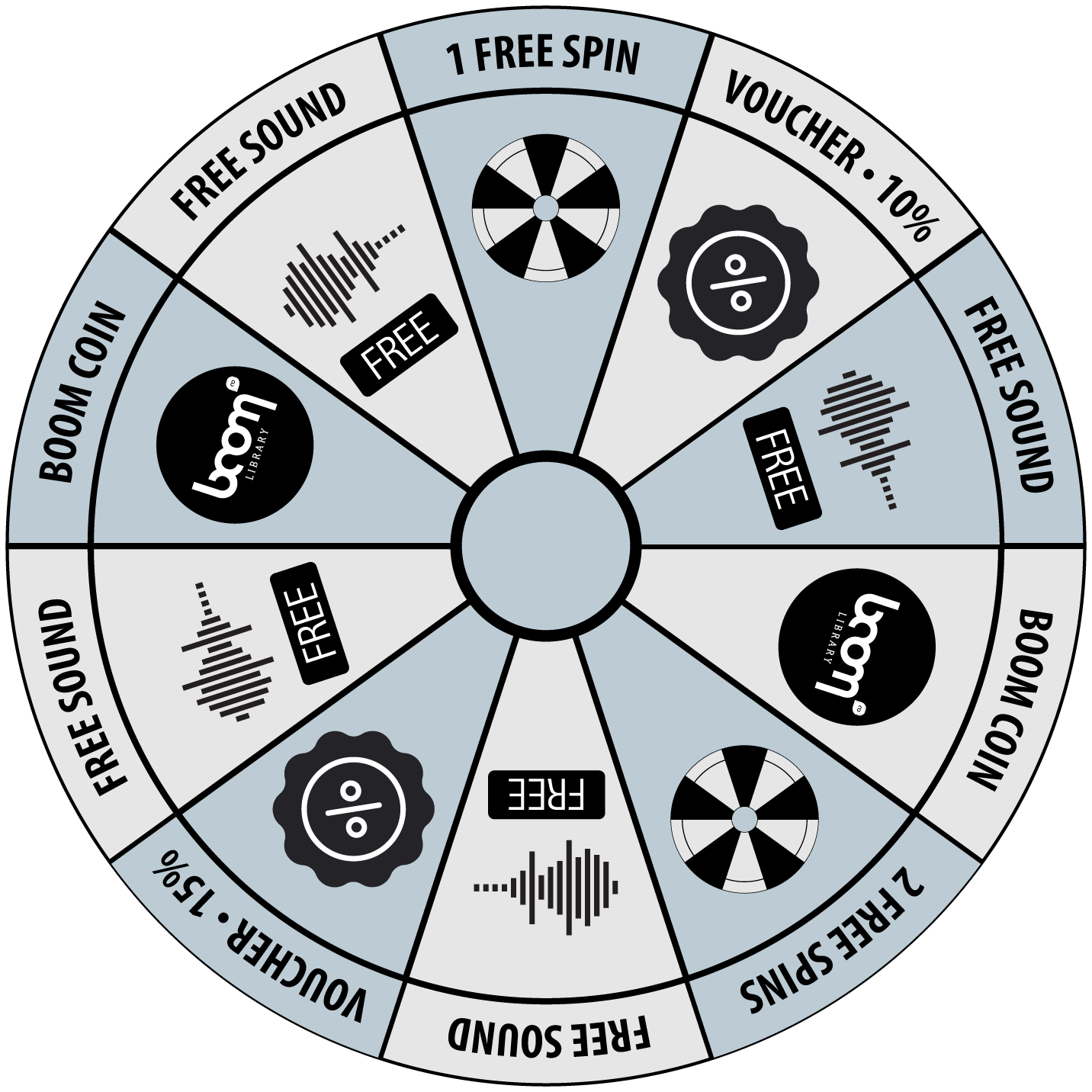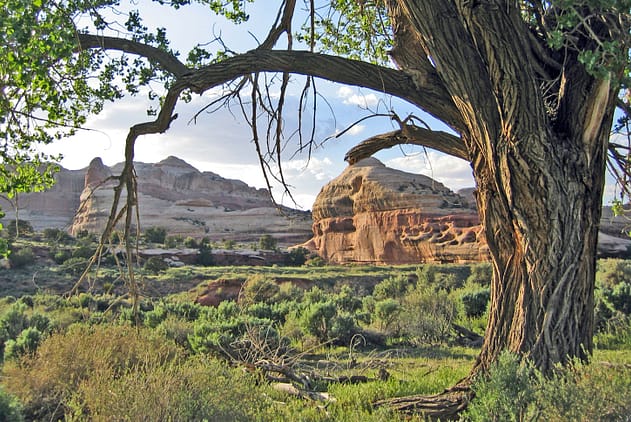You’re a real nature recording specialist when you learn to read your surrounding like a book. Gordon Hempton visits the most remote places on earth and created one of the most extensive nature sound collections on earth. During his recording sessions he met a lot of challenges and learned to assess nature at every time of day. With a bag full of experiences he gives you valuable insights into the world of nature sound recording to support you in your own nature projects.
Gordon Hempton’s experience would last to fill a whole book to explain the nature’s behavior. No sooner said than done! Late November 2016 he published his first book “Earth is a Solar Powered Jukebox”. In it you learn how to listen, where to go, what to bring and how to record nature under nearly all circumstances. The book is the perfect guide to become a real nature recording specialist.
We have sifted through his feedback and assembled some important nature aspects how you can get to know your terrain to capture the best soundscapes. That includes feeling the atmosphere, listening to the echoes of landscapes, learn everything about the different times of day and noticing the signs of animals. Every landscape is unique and the differences are clearly manifested in their soundscapes. You will want to time your visit to the appropriate season, likely at the start of the wetter season when wildlife is most active, but local riverbeds remain dry.
ATMOSPHERES
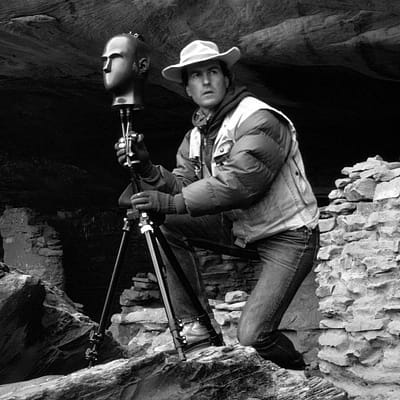
The ambient noise changes with the times of day. Gordon takes the time to listen to the noises in his surrounding and to assimilate to the atmosphere to leave the modern world behind him. Even when nothing is to be heard – allegedly – you are in fact enveloped by a sea of noise atmosphere. Humid atmospheres are more elastic than arid atmospheres and therefore propagate sound faster and more clearly to your microphones, resulting in excellent sound quality. The early morning before sunrise is calm, and then as the sun approaches the eastern horizon stirring the upper atmosphere, we note the shortening of our auditory horizon with the soon-to-arrive first breeze.
Fast atmospheric attenuation produces a limited auditory horizon, which becomes even more limited once daytime winds arrive. The auditory horizon may easily be closer than the visual horizon. Wind is the valve that controls the information flow. Winds cycle on the prairies daily from nearly calm just before sunrise, to rapidly building winds as the sun’s rays heat and stir the atmospheric layers. Sound waves become scattered as the result of passing through turbulent air cells. Under calm conditions a birdsong may be heard for more than a mile, while under very windy conditions the audible range may shrink to barely 300 feet.
ECHOS
High atmospheric attenuation rates plus a lack of physical landforms and vegetation result in free-field conditions with a near absence of echoes. Echoes do occur, as in the rare instance of lightning and the resulting rolling thunder, but this effect is due to air layers of different densities causing multiple sound paths, not the landscape itself. An echo is the voice of a landscape – and is the opportunity to savor this mesmerizing voice. And why researchers studying sound illusions, believe that some of the wall drawings of ancient man may have been inspired by then mysterious auditory reverberations.
Echo clarity varies with the time of day, because echoes follow the daily cycling of atmospheric conditions that enable these delicate vibrations to remain intact as they propel back and forth across rock walls.
MORNING
In the early morning hours, before the creeping dome of light to the east erases the stars, the atmospheric conditions in all habitats, are most likely to have settled into complete stillness–conditions most conducive to long propagation paths resulting in the clearest echoes. This ephemeral, fragile state will begin to deteriorate just as the sun caresses the horizon, heating air layers and causing thermal mixing. Nocturnal animals such as coyotes and owls are most likely to vocalize at this time because their messages will be sent furthest with the least effort. Diurnal animals (that’s fancy talk for “animals who are awake at day-time”), mostly birds, chime in soon after, just before the ambient light casts shadows. Their messages, too, get delivered further, clearer, and with less expenditure of energy than at any other time of day.
Depending on your sound design, now’s the time for a careful blending of original sound (made by animals close by) and modified sound. You will want to remember that the modified sound has more inherent interest to your audience because it expresses spatial information unique to each location, so original sounds should be far less frequent, and possibly absent, if, say, you’ve set your audience in a small rock alcove. The transformation of night into day offers a perfect opportunity to capture your audience’s full attention at the beginning of your program. While in other habitats, the fragile atmospheric conditions of early morning rapidly deteriorate, Canyons, sheltered from prevailing winds and late absorbers of the day’s sunlight, can retain their calm conditions for up to two hours longer.
DAY
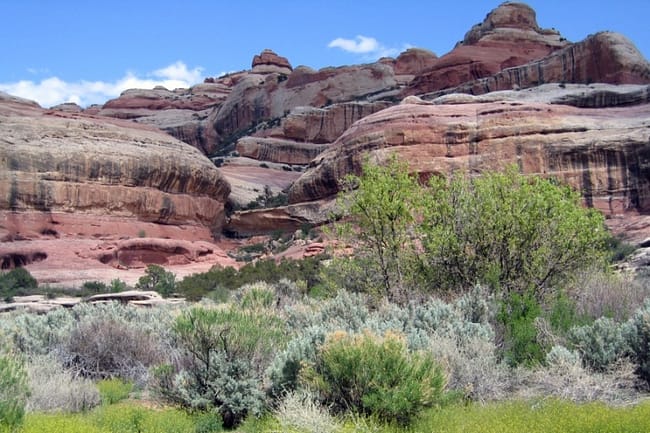
When full sunlight strikes the changes in the atmosphere and the landscape will directly reduce the distance and clarity with which the sounds will travel. The atmospheric changes also result in winds, which will also reduce the audibility of sounds even further. This deterioration of sound quality first impacts a Canyon ridge top and may not completely erase the echoes in the relatively wind-protected areas deep within Canyons, especially rock alcoves, until much later. However, juniper, and other trees that may occupy the ridge top, will produce wind sounds audible in the canyon below, obscuring the deeper nuances of echoes. As the sun arcs higher, baking exposed rocks and leaving shaded rocks colder, temperature gradients produce localized winds. When this occurs, only the loudest echoes (first and second reflections) may be heard. But because the Canyon is now warmer, cold-blooded animals (crickets in particular) will now send out their messages as original sound more than modified. In Canyons with one sunny side and one shady side, you will want to consider that different animals seek warmth in the morning by visiting the sunny side, then move to the shady side as temperatures climb.
EVENING
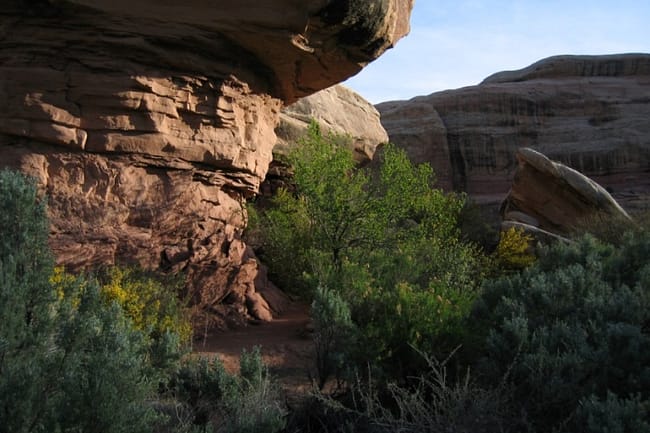
As light diminishes within Canyons, generally earlier than in the surrounding landscape above, thermal mixing declines, winds calm, and heat remains stored in the rock faces that were exposed during the day. Echoes gradually return, but because ridge top winds will likely remain audible well into the night and thermal stratification is still hours away, echoes will not return to full expression until early morning. But unlike the relative chill of mornings, the higher temperatures of evenings allow insect activity to join bird activity during the evening chorus, when rhythmic pulsing echoes will be present.
NIGHT
Moonlight and starlight can be
bright enough to navigate by, but have little effect on winds. Gradually, ridge top winds subside, atmospheric conditions stratify, and the spreading of sound approaches peak conditions for distance and clarity again. Heat retention of canyon rock allows for continued insect activity that gradually trails off and becomes absent (or nearly absent) by early morning. Most mammals are active at night, and as conditions for echoes improve, these hours allow for beautiful solo performances of both original and modified sound events.
ANIMALS

Insects are the primary consumer of plants, yet cold blooded, so warmer temperatures are required before insects stir and make themselves heard. Crickets produce their familiar chirp by rubbing body parts together or stridulating. Grasshoppers also stridulate and crepitate or knock their wings together while in flight. Winged insects, like flies, bees, and mosquitoes, buzz and hum. The pitch of the hum matches the number of wing beats per second. Generally the higher the pitch the smaller and lighter the insect. The sounds of insects are wonderful indicators of environmental quality. Are insects present? If so, it must be warm. Is there only one tone present? Possibly only one insect species is dominant. Are there lots of insects? If so, it must be late season when populations have climbed. Is the experience complex, rhythmic, and many toned? Lots of different insect species must be present, indicating a diverse plant community. All this can be told by tiny wings.
Middle ground deserves most of your attention and thought. Is the vegetation well balanced visually? If not, what are the consequences? Your first day of recording will help you proceed more accurately over sequential days at the same location. Since you will set up your equipment prior to actual recording, learning the predictive nature of vegetation to animal sounds will further your success. Vegetation combined with physical landforms will also provide the acoustic space. Most of this information is obtained from the middle ground.
AUDIO DEMO
Listen to the vast variety of animals.
Listening to nature can be an amazing experience. Being ready for any venture also means to keep your eyes open and minimizing risk. To make sure nothing goes wrong, stay tuned: in our next episode we reveal what you definitely shouldn´t miss on your packing list. Gordon Hempton knows the dangers of nature and has some really good survival tips as nothing is more important than safety.
Whether you are a beginner or seasoned veteran, we hope you gained some helpful insights to go out and rock your own nature sound recordings!
Stay tuned for our next episodes with many more tips and tricks and please check out the wonderful nature sound libraries (DESERTS, QUIETUDES, CANYONS, WETLANDS, CONIFEROUS-FORESTS, UPWELLINGS, DESIDUOUS-FORESTS, WINDS OF NATURE, TROPICAL-FORESTS, NATURE-ESSENTIALS, FORCES OF NATURE, WAVES, THUNDER&RAIN, FLOWING WATER, PRAIRIES, RIPARIAN ZONES, OCEAN SHORES, HAWAII) including extensive articles about the respective record theme by nature recording genius Gordon Hempton!
Don´t miss our first Episode: Know you gear







































































































































































































































